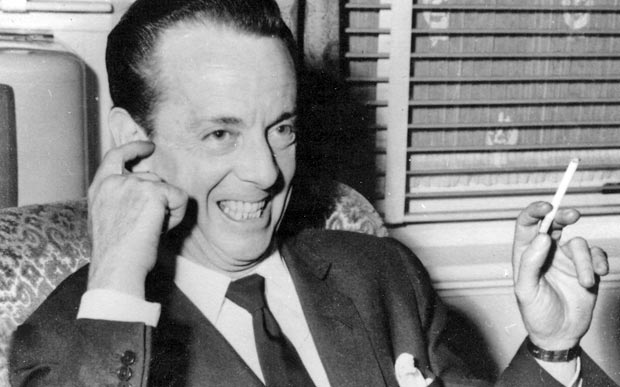
Symposium: The Many Faces of Robert Helpmann
London, Royal Ballet School
27 October 2013
www.royal-ballet-school.org.uk/rhsymposium
www.helpmannawards.com.au
Eighty years after Robert Helpmann left Australia and joined the Sadler’s Wells Ballet company, a Royal Ballet School symposium celebrated his achievements as a man of the theatre. A once-famous figure to ballet and theatre-goers, his name is now popularly associated with his role as The Child Catcher in the film Chitty Chitty Bang Bang.
Balletomanes knew him best as a multi-faceted performer, Margot Fonteyn’s first partner, and as one of the Ugly Sisters, with Frederick Ashton, in Cinderella. The ballets Helpmann choreographed, however, have long vanished from the Royal Ballet’s repertoire; the most enduring, Hamlet, was last performed in 1981. (One of the later ones he created for The Australian Ballet, The Display (1964) was revived by that company last year.) The aim of the symposium was to re-evaluate his achievements by tapping the memories of those who knew him, and by showing extracts of his performances on film.
The day started with the screening of a 50-minute documentary, The Tales of Helpmann, made in 1990 by Don Featherstone for Australian television and shown here on ITV as a South Bank Show. It included tributes by Fonteyn, Ninette de Valois, Frederick Ashton, Alicia Markova and Rudolf Nureyev, as well as actors such as Laurence Olivier, Vivien Leigh, Katherine Hepburn and Keith Michell. Though Helpmann wasn’t a great classical dancer, he was an exceptional performer – and, to judge from filmed extracts and comments by former dancers, a good partner.
Jane Pritchard, curator of dance for the Victoria and Albert Museum, remarked in her talk about Helpmann’s wartime ballets that the period was richly documented in spite of the shortage of paper. Ballet-goers were enthusiasts, writing in detail about what they saw. Lionel Bradley, for example, whose copious records are in the V&A Archives, was the equivalent of a modern-day blogger, describing sets and costumes as well as rating dancers and productions. Since photographs were in black-and-white, Bradley’s notes of colours have proved invaluable.

© Brian Slater. (Click image for larger version)
Most of the contributions to the symposium from veteran ex-dancers who had worked with him were on film, since they were not able to be present in person: Beryl Grey, Julia Farron, Maina Gielgud, Gillian Lynne, all had vivid recollections of ‘Bobbie’. So did Monica Mason and Anya Linden, who took part in the discussions. David Drew, who had been instrumental in planning the homage to Helpmann, was unfortunately too unwell to attend the symposium. It has been his project to reconstruct Miracle in the Gorbals (1944), in which he appeared as a youngster, as did Gillian Lynne, Julia Farron, Jean Bedells, Henry Danton and Pauline Clayden.
Their joint attempts to remember their roles were filmed during workshop sessions with Royal Ballet dancers and students earlier in the year. Further plans are under consideration to see whether the wartime dance-drama could be recreated for performance, thereby reclaiming its place in the development of British ballet. Even if Helpmann’s choreography, more drama than dance, cannot be fully retrieved, there is a lot of information about the work. It had a carefully worked-out scenario by Michael Benthall, Helpmann’s young partner; the score by Arthur Bliss is closely linked to events in the scenario; detailed descriptions of the action, music, and setting by Edward Burra, were written by Arnold Haskell and others.
Far less can be recalled about Adam Zero, created for the newly-restored Covent Garden stage in 1946. Even Benthall, who wrote two scenarios for it, reckoned the piece was fatally overburdened with ‘isms’: existentialism, symbolism, expressionism. For the symposium, Andrew McNicol, former Royal Ballet School pupil, now freelance choreographer, was asked to create his own version, using as much of Bliss’s score as he wanted and any themes from the original work. He came up with two sections of contrasting choreography involving a male protagonist and three female Fates (all RBS students). McNicol is an impressive young choreographer, musical and fully engaged with his material and his eager subjects. We’ll be seeing a lot more of his talent.
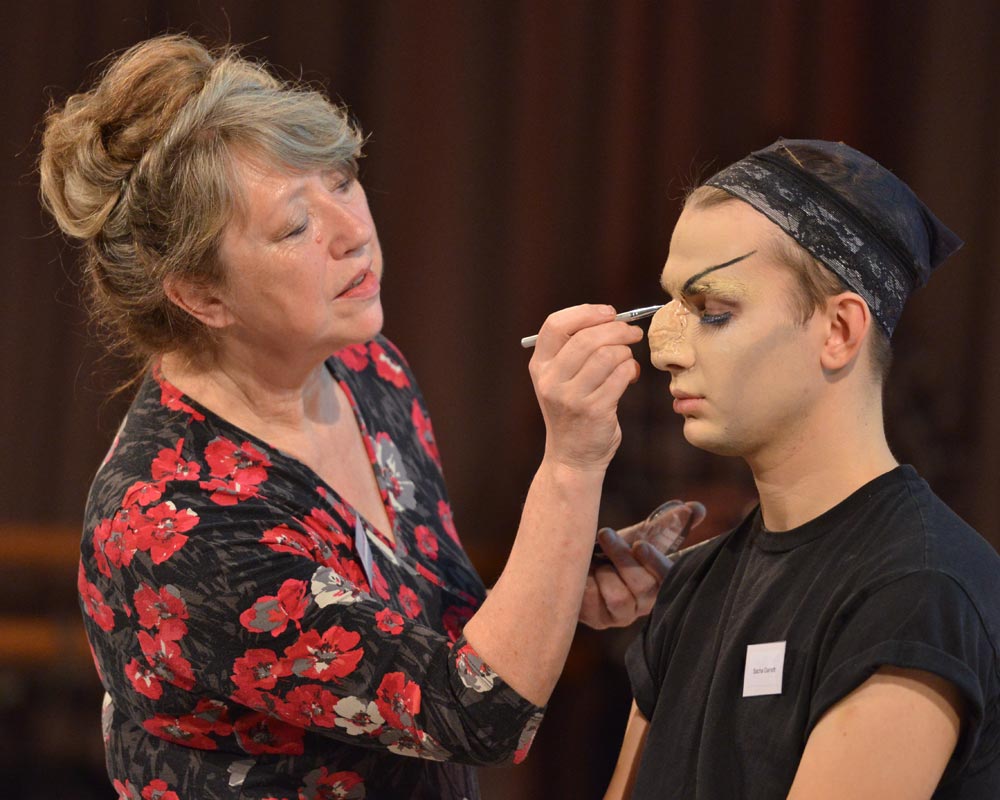
© Brian Slater. (Click image for larger version)
Students were also required for a hands-on make-up demonstration by Joyce Beagarie, formerly at the National Theatre. She explained that Helpmann’s famously elaborate make-up was designed (by himself) not only for the character he was playing but for stage lighting of the time. Yellow-toned tungsten lights illuminated faces from below, requiring heavy make-up if features were not to be wiped out. She demonstrated the effect with three students whose faces she had transformed to resemble Helpmann’s in Gordon Anthony’s portraits of him in character.
He was seen on film in extracts illustrating a talk by Libby Worth, senior lecturer in theatre practice at Royal Holloway, who showed how Helpmann’s dance experience informed his acting roles, particularly in early Powell and Pressburger films (The Red Shoes, The Tales of Hoffman, One of our Aircraft is Missing). She analysed a key scene from Chitty Chitty Bang Bang in which Helpmann as the villainous Child Catcher danced around the set, mesmerising the camera and terrifying viewers of all ages. Gosh, he was good!
Richard Cave, emeritus professor of drama and theatre arts at Royal Holloway, spoke about Helpmann as a theatre actor at Stratford and The Old Vic in the 1940s and 1950s. His roles were typically those of ‘outsiders’. He was outstanding physically, in any case, and moved differently from his fellow actors. His reactions, using his extraordinary eyes, were graphic, and (unlike most dancers turned actors) he was skilled at using the range of his voice – as archive sound recordings reveal. His Hamlet, in two different productions in 1944 and 1948, was respected by actors and critics alike.
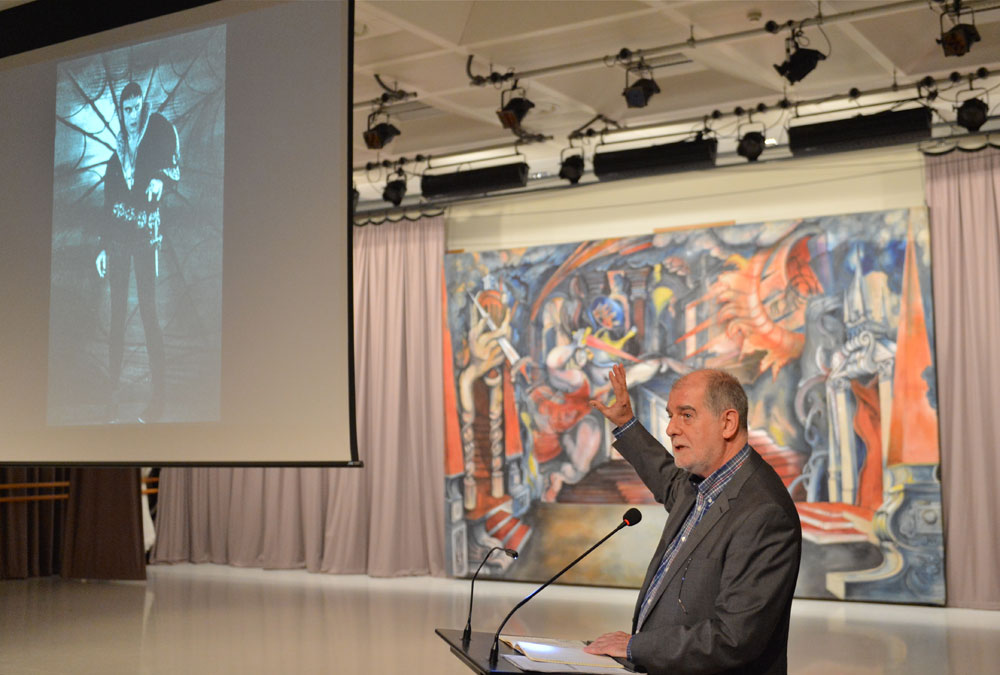
© Brian Slater. (Click image for larger version)
Helpmann claimed that his Hamlet ballet (1942) was his audition for the acting role. Theatre historian Charles Duff remarked that the ballet, with its hallucinatory designs by Edward Burra, was in the spirit of Expressionist drama productions of Hamlet at the time. Monica Mason displayed a gallery version of the backdrop, given to her by the Burra family and presented by her to the Royal Ballet Lower School at White Lodge; an archive black-and-white film of the 1964 revival, with Nureyev as Hamlet, was screened as the conclusion of the symposium. Too blurred to see properly, it served nonetheless as a reminder of the 1981 revival (with Anthony Dowell as Hamlet), which I remember clearly. It was then that I revised my uninformed opinion of Helpmann as a flamboyant poseur, and began to wonder why his impact on British ballet seemed to have diminished with time. Maybe this symposium, several biographies and the 1990 documentary (which ought to be available as a DVD), are helping give Helpmann the respect he is due in Britain as well as Australia.







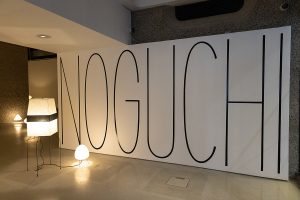

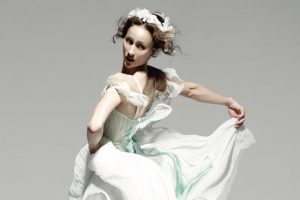



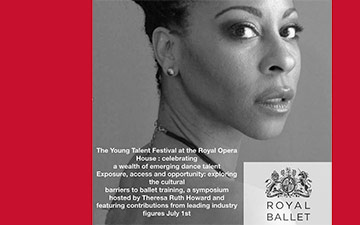
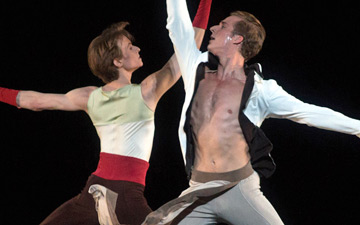
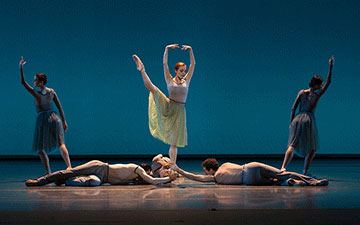

I remember years ago when I was dancing with Mr.Balanchine at New York City Ballet, I had written a letter to Mr. Robert Helpmann and he answered me back sweetly. He signed it Robert.
Yours in Dance,
Frank Ohman
Former Soloist New York City Ballet 1962-1984.
http://www.ohmanballet.org